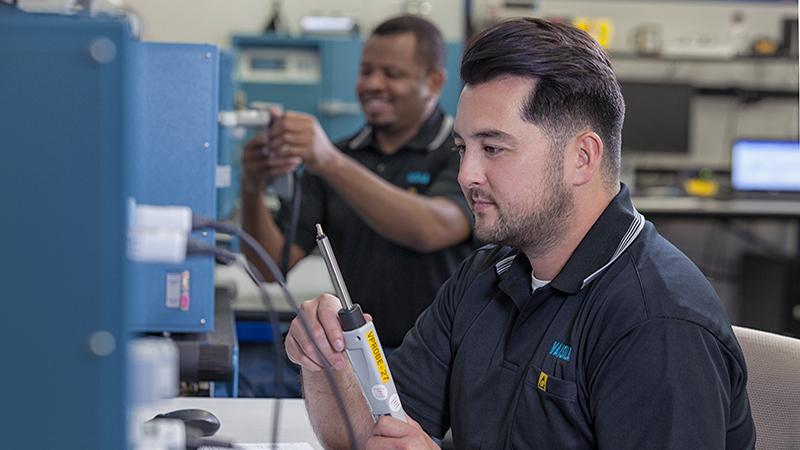Spot-checking measurements of environmental conditions
Field spot-checking is a common way to determine the measurement accuracy of a fixed measurement instrument between calibration intervals. However, it is important to understand that spot-checking is different from field calibration. In this blog we will briefly go over some of the differences. Spot-checking and field calibration are similar in that they both use a reference standard to verify the measurement against the unit under test.
Spot-checking is a less time-consuming process than calibration, in part because the calibration process can include as-found data, adjustment (if necessary), and as-left data whereas spot-checking is a verification that the unit under test is still within specification. It is helpful to remember that the calibration process deals with the instrument involved, not the measurements it produces. Field calibration processes should be performed under normal process conditions using standard laboratory determinations of sample concentration.
Like calibration, your quality guidelines should have defined intervals for spot-checking. Guidelines should be defined before-hand with pre-established limits to determine potential actions based on results of the checks.
Spot-checking can also be part of a verification process because it ensures that measurement output on a process sensor is within specifications. Simply stated, in spot-checking, verification and field calibration, you are comparing measurements. Ideally, the device you are using to check is known to be accurate based on its calibration status. However, there are differences in spot-checking, verification, and calibration, most importantly, in calibration you may make decisions and adjustments based on your comparison.
Intermediate checks (aka Spot checks)
Depending on your quality guidelines, devices used for spot-checking may require verification to ensure confidence in their measurement. Intermediate checks are periodic quality assessments performed while an instrument is between calibration intervals to ensure it is still within specification. A spot-checking device is in good condition so long as its observed error or drift is within acceptable limits over a given time period, or in a given scenario such as in field spot-checking.
The simplest form of intermediate check “spot-check” is a verification in which you compare two sensors that measure the same parameter. You use one sensor as the reference standard, the other sensor is the unit under test (UUT) to check for measurement output differences. It is not necessary to perform a full measurement range check or calculate measurement uncertainties, but the process should be proceduralized (that is to say, performed on a schedule, with defined instruments, etc.) and documented.
Guidance on intermediate checks
Intermediate checks according to ISO 17025:2017:
6.4.2: When the laboratory uses equipment outside its permanent control, it shall ensure that the requirements for equipment of this document are met.
6.4.10: When intermediate checks are necessary to maintain confidence in the performance of the equipment, these checks shall be conducted according to a procedure.Ensuring the Validity of Results - 7.7.1: The laboratory shall have a procedure for monitoring the validity of results. This monitoring shall be planned and reviewed and shall include, where appropriate, but not be limited to: (e). intermediate checks on measuring equipment;
Intermediate checks according to ISO 9001:2015 Monitoring and measuring resources 7:15:
7.1.5.1 General
The organization shall ensure that the resources provided:
b) are maintained to ensure their continuing fitness for their purpose.
The organization shall retain appropriate documented information as evidence of fitness for purpose of the monitoring and measurement resources.
Conclusions
In essence, intermediate checking, spot-checking, and verification mean the same thing functionally. Which is to say: they achieve the goal of ensuring the accuracy of deployed sensors between calibrations. Whether you use spot-checks or intermediate checks, the key is to choose the term appropriate to your industry and organization and ensure those term(s) are used in a consistent way in your quality and procedural documents. Consistency is part of Good documentation practices (GDocP) and an industry expectation in the creation, maintenance and development of documents. Any industry that complies with GxP needs to value consistency, in approaches as well as terms used in documentation.







Comment
kiitos, mukavaa, että pidit artikkelistamme.
Add new comment